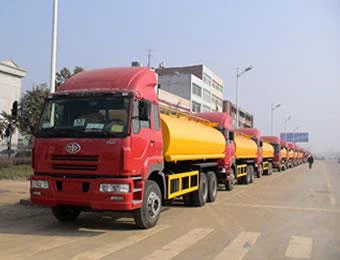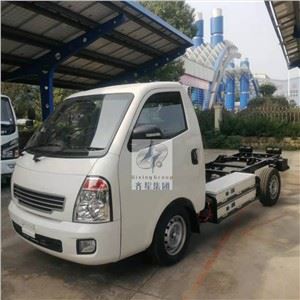Understanding Airport Lift Trucks: Your Comprehensive Guide

Airport lift trucks play a crucial role in maintaining the efficiency and safety of airport operations. From assisting with baggage handling to supporting aircraft maintenance, these vehicles are essential for the smooth running of any airport. In this article, we will explore everything you need to know about airport lift trucks, including their types, functions, features, and best practices for usage.
What Is an Airport Lift Truck?
An airport lift truck, often referred to as a baggage lift truck or ground support equipment (GSE), is a specialized vehicle designed for various tasks related to aircraft servicing and baggage handling. These trucks can elevate cargo or staff to required heights, approach aircraft safely, and transport goods efficiently. Understanding the types and capabilities of airport lift trucks is essential for effective airport operations.
Types of Airport Lift Trucks
1. Baggage Lift Trucks

Baggage lift trucks are specifically designed to transport luggage from terminal buildings to the aircraft. They often feature hydraulic lifts and low beds to facilitate loading and unloading operations.
2. Aircraft Maintenance Lifts
These lift trucks provide access to aircraft components for maintenance and inspections. They typically have adjustable platforms and robust safety features to ensure the safety of personnel working at heights.
3. Cargo Loaders
Used primarily for loading and unloading cargo from freighter aircraft, cargo loaders have high load capacities and may feature extendable platforms for easy access to cargo bays.
4. Fuel Trucks
Fuel lift trucks support the refueling of aircraft, equipped with tanks for aviation fuel. They must comply with safety regulations to prevent spills and accidents.
5. Catering Trucks
These trucks transport food and supplies to aircraft. Catering lift trucks can vary in design but typically have insulated compartments to keep food at the appropriate temperature.
Key Features of Airport Lift Trucks
1. Safety Mechanisms
Safety is paramount in airport operations. Lift trucks are equipped with features such as:

- Emergency stop buttons
- Guard rails for personnel platforms
- Anti-tip systems
2. Mobility and Maneuverability
Lift trucks are designed to navigate tight spaces within airport terminals and on ramp areas. Many are equipped with:
- Compact layouts
- Hydraulic steering systems
- All-terrain capabilities for varying surfaces
3. Load Capacity
Different haul capacities of lift trucks are designed to meet varying operational needs. It’s essential to select equipment based on weight requirements:
| Type of Lift Truck | Load Capacity (lbs) |
|---|---|
| Baggage Lift Truck | 2000 – 4000 |
| Cargo Loader | 4000 – 7000 |
| Maintenance Lift | 300 – 1000 |
| Fuel Truck | 6000 – 12000 |
4. Engine Types
Airport lift trucks typically use one of the following engines:
- Internal combustion engines
- Electric engines
Choosing the right engine type can depend on the working environment, available fuel sources, and emissions regulations.
Importance of Airport Lift Trucks
1. Efficiency in Ground Operations
Lift trucks streamline the process of ground handling, minimizing turnaround times for aircraft. Efficient loading and unloading ensures that aircraft remain on schedule.
2. Enhanced Safety
With safety mechanisms in place, lift trucks help reduce the risk of accidents during loading, unloading, and maintenance operations. Proper training in operating these vehicles significantly contributes to safety.
3. Cost-Effectiveness
Investing in reliable and efficient lift trucks can lead to lower operating costs over time due to reduced labor costs and increased productivity.
Best Practices for Operating Airport Lift Trucks
1. Routine Maintenance Checks
Conducting regular maintenance is crucial for ensuring vehicle longevity and operational safety. This includes:
- Checking fluid levels (oil, hydraulic fluid)
- Inspecting the brakes
- Auditing safety features
2. Operator Training
All personnel must undergo comprehensive training before operating lift trucks. Training should cover:
- Basic vehicle mechanics
- Load limits and safety protocols
- Emergency procedures
3. Proper Loading Techniques
Following best practices in loading and unloading ensures safety. Use the following guidelines:
- Distribute weight evenly
- Do not exceed load limits
- Secure cargo properly to prevent shifts

4. Regular Safety Audits
Conducting safety audits help identify risks in operations. These audits should include:
- Reviewing compliance with safety regulations
- Evaluating operator performance
- Inspecting vehicle conditions
Real-Life Examples of Airport Lift Trucks in Action
Case Study: Chicago O’Hare International Airport
At Chicago O’Hare, the efficient use of baggage lift trucks has improved luggage handling efficiency, reducing average turnaround times by 15%. The implementation of routine checks and operator training has minimized incidents and injuries, showcasing the need for skilled operation in maintaining safety and efficiency.
Case Study: Heathrow Airport
Heathrow employs a fleet of specialized fuel trucks that ensure on-time delivery of aviation fuel across various terminals, contributing to seamless operations. Their proactive maintenance protocols have resulted in significant cost savings and reduced environmental impact.
Future Trends in Airport Lift Truck Technology
1. Electrification
With a push towards sustainability, more airports are transitioning to electric lift trucks, which provide benefits such as reduced emissions and operational costs.
2. Automation
Automated lift trucks are being explored for unattended operations. The emergence of autonomous technology may revolutionize ground handling and enhance safety standards.
3. Advanced Safety Features
New technology is leading to advanced safety features, including collision avoidance systems, enhancing safety for both operators and pedestrians in busy airport environments.
FAQs about Airport Lift Trucks
1. What is the main purpose of an airport lift truck?
The main purpose of an airport lift truck is to facilitate the loading, unloading, and servicing of aircraft. These vehicles improve operational efficiency and enhance safety in ground handling processes.
2. How do I choose the right airport lift truck for my operation?
Consider factors such as load capacity, type of operation (baggage transport, fuel service, etc.), available fuel sources, and whether you need features like electric versus combustion engines.
3. Are airport lift trucks safe to operate?
When used correctly and subject to regular maintenance and operator training, airport lift trucks are safe. Adhering to safety protocols significantly minimizes risks.
4. How often should airport lift trucks undergo maintenance?
It’s typically recommended that airport lift trucks have routine maintenance checks on a monthly basis. However, frequency can vary depending on usage and manufacturer guidelines.
5. Can airport lift trucks be operated in all weather conditions?
Most airport lift trucks are built for durability and can operate in various weather conditions. However, operators should assess safety concerns such as ice or heavy rain.
6. What training is required for operating an airport lift truck?
Operators should undergo training that includes vehicle operation, safety protocols, emergency procedures, and roadway awareness. Certification may be required depending on local regulations.
